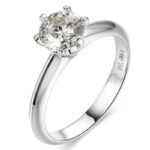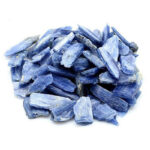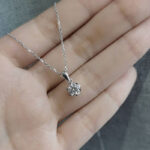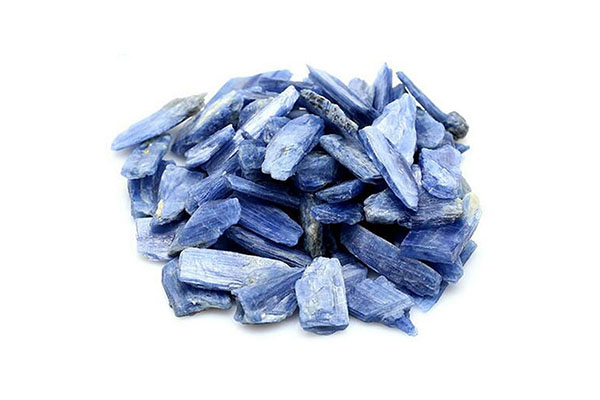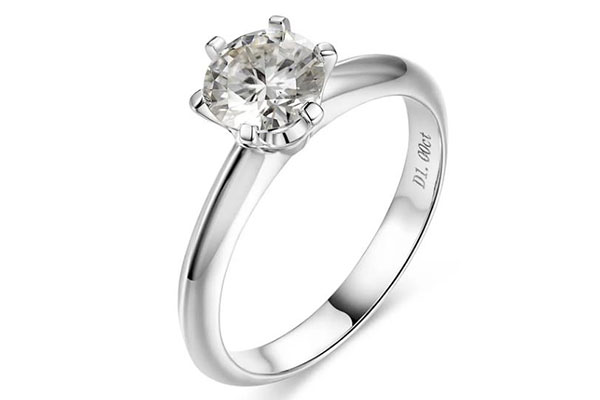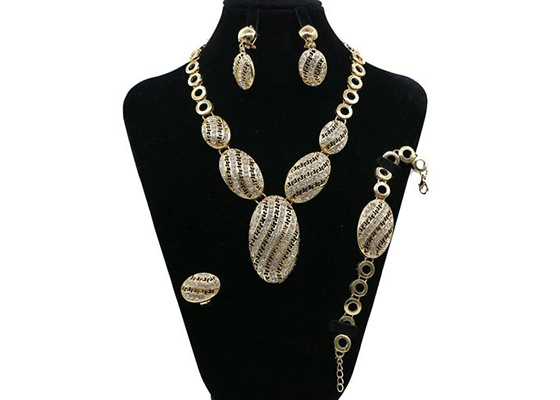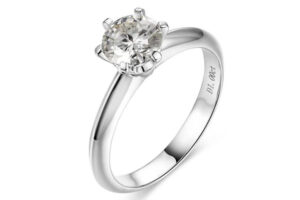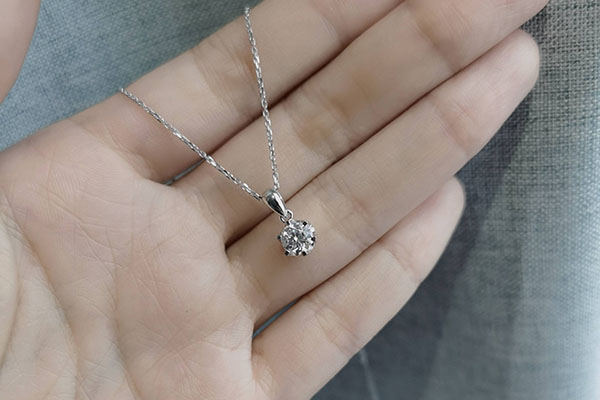Gemstones have fascinated people for centuries with their beauty, rarity, and mystical properties. Two gemstones that have gained popularity in recent years are Kyanite and Celestine. While both stones have some similarities, they also have distinct differences that make them unique. In this article, we will compare and contrast Kyanite and Celestine, examining their composition, physical properties, uses, availability, and pricing.
Composition and Formation
Chemical composition
Kyanite is an aluminum silicate mineral with the chemical formula Al2SiO5. It is formed from the metamorphism of clay-rich sediments, where the high temperatures and pressures cause the clay minerals to recrystallize into Kyanite.
Celestine, on the other hand, is a strontium sulfate mineral with the chemical formula SrSO4. It is formed in evaporite deposits where seawater or brine evaporates, leaving behind crystals of Celestine.
Crystal structure
Kyanite has a triclinic crystal structure, meaning that its crystal lattice is composed of three axes of unequal length and inclined at angles that are not 90 degrees. This unique structure gives Kyanite its characteristic bladed appearance.
Celestine, on the other hand, has an orthorhombic crystal structure, meaning that its crystal lattice is composed of three axes of unequal length that are at right angles to each other. This structure gives Celestine its distinctive prismatic shape.
Formation process
Both Kyanite and Celestine are formed under different geological conditions. Kyanite is formed from the metamorphism of clay-rich sediments, while Celestine is formed in evaporite deposits. These different formation processes result in different physical and chemical properties for each stone.
Physical Properties
Color and Appearance
Kyanite is typically blue, but can also be found in green, yellow, and white varieties. It has a vitreous to pearly luster and can be transparent to translucent. Kyanite is known for its bladed crystal habit and distinctive blue color, which is caused by the presence of trace amounts of iron and titanium.
Celestine is typically pale blue, but can also be found in white, colorless, and yellow varieties. It has a vitreous to pearly luster and can be transparent to translucent. Celestine is known for its prismatic crystal habit and distinctive pale blue color, which is caused by the presence of strontium ions.
Hardness
Kyanite has a hardness of 4.5-5 on the Mohs scale, making it relatively soft compared to other gemstones. It can be scratched by harder materials, such as quartz or topaz.
Celestine has a hardness of 3-3.5 on the Mohs scale, making it even softer than Kyanite. It can be easily scratched by a fingernail or a copper penny.
Specific gravity
Kyanite has a specific gravity of 3.5-3.7, meaning that it is heavier than an equal volume of water.
Celestine has a specific gravity of 3.9-4.0, making it even heavier than Kyanite.
Cleavage and Fracture
Kyanite has perfect cleavage along two planes, which means that it can be easily split into thin, flat pieces. It also has a brittle fracture, which means that it breaks into irregular pieces with sharp edges.
Celestine has perfect cleavage along one plane, which means that it can be easily split into thin, flat pieces. It also has a conchoidal fracture, which means that it breaks into smooth, curved pieces with a shell-like appearance.
Uses and Applications
Jewelry and Ornamental Uses
Kyanite is a popular gemstone wholesale for jewelry, especially in blue and green varieties. It is often used as a substitute for sapphire or blue topaz due to its similar color. Kyanite is also used as a decorative stone in carvings, sculptures, and mosaics.
Celestine is also used in jewelry, but its softness and brittleness make it less suitable for everyday wear. It is often used as a decorative stone in figurines, bookends, and other ornamental objects.
Industrial Uses
Kyanite has a high melting point and is often used in the manufacture of heat-resistant ceramics, such as crucibles, furnace linings, and refractory bricks. It is also used as a raw material in the production of porcelain, glass, and other ceramic materials.
Celestine is used in a variety of industrial applications, including the production of strontium carbonate, which is used in the manufacture of fireworks, flares, and magnets. It is also used as a flux in the production of metals, such as aluminum and steel.
Spiritual and Healing Properties
Both Kyanite and Celestine are believed to have spiritual and healing properties. Kyanite is said to promote inner peace and tranquility, enhance psychic abilities, and promote communication and self-expression. Celestine is said to enhance creativity, calm the mind, and promote spiritual growth.
Availability and Pricing
Global Distribution
Kyanite is found in many locations around the world, including the United States, Brazil, India, and Kenya. The highest quality Kyanite is found in Nepal, where it is known as “Nepalese Blue.”
Celestine is found in many locations around the world, including the United States, Mexico, and Madagascar. The highest quality Celestine is found in Madagascar, where it is known as “Madagascar Blue.”
Rarity and Availability
Kyanite is a relatively common mineral and is widely available in the gemstone market. High-quality Kyanite is less common, but is still readily available for purchase.
Celestine is rarer than Kyanite and is less widely available in the gemstone market. High-quality Celestine is even rarer and can be difficult to find.
Price Range
The price of Kyanite varies depending on its quality, size, and color. Blue Kyanite is typically more expensive than other varieties, with high-quality stones costing several hundred dollars per carat.
The price of Celestine also varies depending on its quality, size, and color. Pale blue Celestine is typically less expensive than other varieties, with high-quality stones costing several hundred dollars per carat.
Comparison and Contrast
Kyanite and Celestine have some similarities, such as their use in jewelry and decorative objects, as well as their spiritual and healing properties. However, they also have distinct differences in terms of their composition, physical properties, uses, availability, and pricing.
Kyanite is a harder and heavier gemstone than Celestine, making it more durable and suitable for everyday wear. It is also more widely available and less expensive than high-quality Celestine. On the other hand, Celestine has a distinctive pale blue color and is believed to have unique spiritual and healing properties.
Conclusion
Kyanite and Celestine are both beautiful and unique gemstones with their own distinct characteristics. Whether you prefer the bladed blue crystals of Kyanite or the prismatic pale blue crystals of Celestine, both stones have their own charm and beauty. When choosing between Kyanite and Celestine, consider your personal preference,intended use, and budget to make the best decision for you. Both stones are great choices for jewelry and decorative objects, and their spiritual and healing properties make them even more special.
Overall, Kyanite is a more practical choice due to its durability and wider availability, while Celestine is a more unique and special choice due to its rarity and distinctive color. Whichever gemstone you choose, you can be sure that you are getting a beautiful and meaningful piece that will bring joy and beauty into your life.

